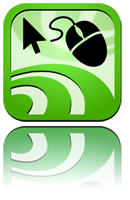Text
Headings
HTML has six levels of headings, numbered 1 through 6, with 1 being the largest. Headings are displayed in larger, or smaller fonts, and usually bolder. If you wanted to type "Hello", this is what you would type for each heading, and what the outcome is:
<h1>Hello</h1>
Hello
<h2>Hello</h2>
Hello
<h3>Hello</h3>
Hello
<h4>Hello</h4>
Hello
<h5>Hello</h5>
Hello
<h6>Hello</h6>
Hello
Paragraphs
Whenever you have more than a sentence of writing, you should have paragraphs. Personally, I don't see what the difference is, but I do it anyway, because then I can find a certain spot better when programing. To Make a paragraph of "This is a web page. How do you like what I've done? Please e-mail me with any suggestions at a@a.com", type:
<P>This is a web page. How do you like what I've done? Please e-mail me with any suggestions at a@a.com</P>
The outcome is:
This is a web page. How do you like what I've done? Please e-mail me with any suggestions at a@a.com
Lists
There are two types of lists that you can make in HTML, dotted, and numbered. To make a dotted list of: red, orange, green, blue, purple, black, and brown, type:
<UL>
<LI> red
<LI> orange
<LI> green
<LI> blue
<LI> purple
<LI> black
<LI> brown
</UL>
The result is:
- red
- orange
- green
- blue
- purple
- black
- brown
To make a numbered list of: red, orange, green, blue, purple, black, and brown, type:
<OL>
<LI> red
<LI> orange
<LI> green
<LI> blue
<LI> purple
<LI> black
<LI> brown
</OL>
The result looks like:
- red
- orange
- green
- blue
- purple
- black
- brown
Forced Line Breaks
There are many cases in which you want to end typing on one line, and start on the next. To do this, you can use a simple HTML command. This is one of the few commands that you don't have to put an ending command on. Let's say that you wanted to say "Hello, how are you?", but with each word on a separate line. All you have to type is:
Hello,<BR>how<BR>are<BR>you?
The outcome is:
Horizontal Rules
Every now and then, you might want to have a horizontal rule, or line in your page. Horizontal rules can be many different sizes and lengths. You can also have the line be solid black, by typing NOSHADE. Here are several examples of sizes and widths, and what the outcome is:
<HR SIZE=1 WIDTH=100%>
<HR SIZE=5 WIDTH=50%>
<HR SIZE=25 WIDTH=75%>
<HR SIZE=3 WIDTH=100%>
<HR NOSHADE SIZE=1 WIDTH=100%>
<HR NOSHADE SIZE=3 WIDTH=100%>
<HR NOSHADE SIZE=10 WIDTH=20%>
Character Formatting
You may want to format some of your text differently than others using text styles. There are several types of styles of text that you can use: bold, italic,underline, strikeout, superscript, subscript, teletype, and text are examples. To do these styles, surround your text with the following commands:
<b>, </b> for bold
<i>, </i> for italic
<u>, </u> for underlined
<strike>, <strike> for strikeout
<sup>, </sup> for superscript
<sub>, </sub> for subscript
<tt>, </tt> for teletype
<blink>, </blink> for text (very annoying)
You can also mix styles together like this!














